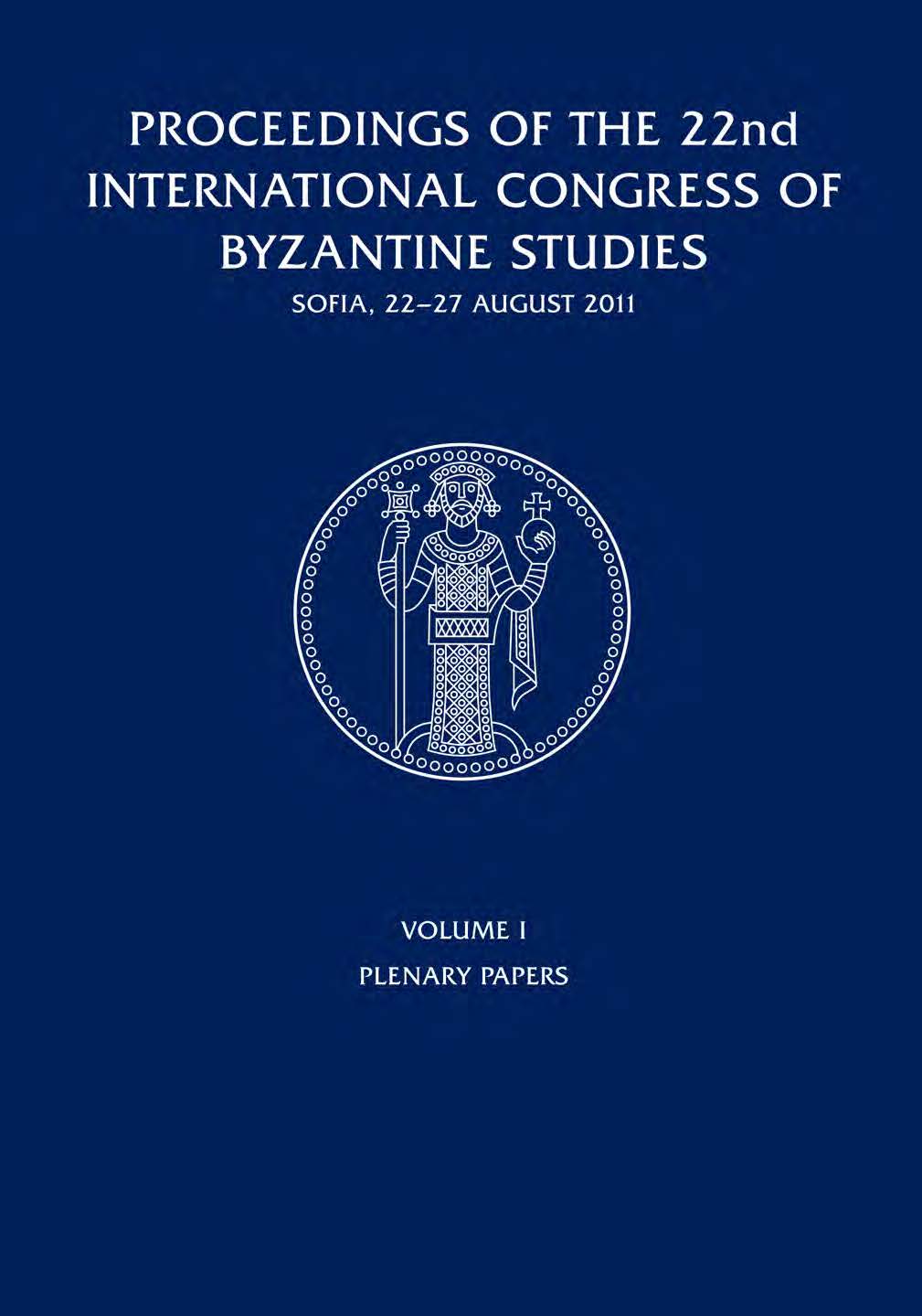

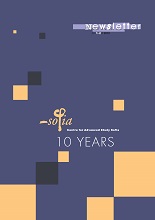
Keywords: Centre for Advanced Study; CAS; CAS-Sofia; Newsletter; CAS Newsletter; CAS Newsletter 2010
Articles, pictures and interviews can be reprinted only with the consent of Centre for Advanced Study Sofia (CAS - Sofia). Any citations should be duly acknowledged.
More...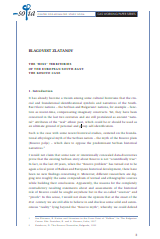
The purpose of this essay is to investigate the meaning of “homeland” for Bulgarians under Ottoman rule. The formation of a collective territorial identity can be traced to the period between the late 18th century to 1878 and the creation of a sovereign Bulgarian state. The transition from pre-modernity to modernity is marked by the gradual emergence of an educated elite, a network of schools, and a Bulgarian-language press. The system of mass education is a classical mechanism for homogenizing communities at the supra-local level, and the formation of the Bulgarian nation is no exception to this rule. In other respects, however, the development of Bulgaria’s system of mass education had several peculiarities, and this is what makes it interesting to study. First, the educational system developed free of bureaucratic supervision. It was controlled neither by the Church nor by the state, and it comprised schools maintained and governed by local village and town parishes. Second, the people employed in this system studied at lyceums and universities in different foreign countries and introduced elements from the respective country’s educational standards in Bulgarian schools. None of these countries however controlled the transfer of textbooks and programs.
More...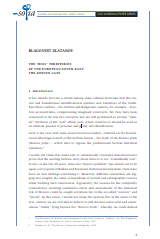
In the eighteenth and the beginning of the nineteenth century, Plovdiv was a complex multicultural space – a sort of ‘Balkans in miniature’. There lived Orthodox and Catholic Christians, Muslims; Bulgarians, Turks, Greeks, Jews, Armenians, Pavlikyans (Bulgarian Catholics), Roma and even merchants from Ragusa (i.e. Dubrovnik). But the Ottoman city was multicultural in a medieval, not a modern sense. It was far from the ideal of modern multiculturalism – far from being a melting pot, a hybrid place for contacts, conflicts, and re-negotiations of boundaries. The fact that communities met face-to-face did not mean they were in a state of democratic cohabitation, with their cultural identities equally represented in public space, public conflicts or creative dialogues. Before the 1820s, every ethnic-cultural and religious community had its own isolated, localized and strictly defined mode of living, and the contacts between these communities, limited to the practical needs of economic exchange, seem to have been well-regulated and hierarchically structured, also in spatial terms. These communities inhabited different neighborhoods, some of them quite closed and endogamous (the Pavlikyans (Bulgarian Catholics), Jews and Armenians). They had distinct secular and religious cultures, dress, emblematic everyday food; they practiced their religions in separate temples, celebrated their own holidays and performed their religious rituals in different holy languages (Turkish, Greek, Ladino, even Italian). Thus, in the early 19th century the city lived in pre-modern coexistence of small religious and cultural communities that perpetuated their own distinct modes of living. The most typical token of this enclosure were the communities’ taboos regarding specific eating, drinking or sexual practices of the other communities, stigmatised as repulsive and unclean.[..]
More...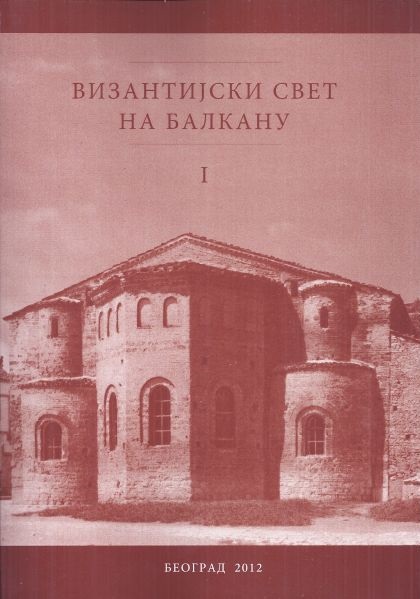
Constantinople, capital of the Byzantine Empire, was one of the most important cities in the Middle Ages, a city resembling a giant lighthouse shedding light on all of Christendom. As it was also a very important city in Serbian history, it was mentioned in the old Serbian genealogies, annals and inscriptions. In reference to the medieval Constantinople, the first news about the city on the Bosphorus relate to the 4th century, and then, after an interval of several centuries, the 9th, then 13th, 14th and 15th centuries. It refers to various events primarily connected with Byzantine-Serbian relations in the Late Middle Ages, but not only those. If we look at the individual mention of medieval Constantinople, by centuries, then the following scenario exists: 4th century — two events, 9th century — three, 13th — five, 14th six, 15th century (concluding the year 1453) — six events. Speaking about the way Constantinople was referred to, the term most frequently used was Constantine’s city, then Constantinople, followed by the term “Imperial City.” The old Serbian genealogies, annals and inscriptions, besides Constantinople, also mention cities like Belgrade, Skopje and Ni{ less frequently, and then Vienna, Budapest and Moscow in the centuries following the Middle Ages.
More...
The paper deals with the autobiographical impulse in the Alexiad of Anna Comnene. We tried to analyze certain passages in order to show in which way Anna’s personal views influenced her description and presentation of certain personages. We will show how her elaborate portrayal is not a mere rhetorical exercise, but is intended by the author as both praise and a critique of the people who influenced her life, and encouraged or suppressed her ambitions. Apart from a physical description, which she used for the evaluation of moral character, and personal judgment, the important thing is the role she ascribed to certain personages. The most beautifully depicted and praised characters were, quite intentionally, the key figures in her struggle to defend her imperial right, of which she was deprived after the birth of John Comnenus. We also analyzed two extensive passages that openly show Anna’s never surpassed imperial ambition and malice toward her younger brother John. Those are narratives about her birth, followed by the birth of Princess Maria and Prince John, and about Alexios’ final days. In both stories, Ana Comnene depicts herself as the central figure of family love, emphasizing the emotional connection she established with her parents, especially Alexios, while still in her mother’s womb. At her father’s deathbed she represents herself as the child most committed to her dying father, without forgetting to give us a sarcastic hint about the emperor’s successor who had left the palace, in order to seize the throne. We have also discussed her silence about certain events, or personages, stressing in the first place, that she rarely mentions her brother John, and even when she does, she often juxtaposes him with the overwhelmingly praised Constantine Doukas, or Nicephoros Bryennios. We found some stylistic features that show in how many different ways theauthor appeared in her own text. We have considered just the possessive pronoun “emos” which she used extensively mentioning her father, mother, husband, and her beloved siblings (i.e. Maria and Andronicus). By using this pronoun, she put herself into the story, where she appears almost always, constantly stressing her connection with the protagonists, and especially the hero, which she mentions as “emos pater” in all cases, 92 times. In the end, we are still left with many more questions than answers. It is certain that Ana’s presence in her own story has to be examined much more deeply, and that quite often, passages and notes that appear in the first place as non-autobiographical reveal a great deal about her and slightly change the perception of the final aims of her work. Therefore, we openly ask what the aim was of such an endeavor as the Alexiad? Was it aimed to be a heroization of Alexios and the construction of an ideal ruler in a new imperial ideology, or was it the self-praise of his first-born child, that even in the days of the third Comnenian ruler refused to admit the ultimate downfall of all her ambitions?
More...
The formal status of illegitimate children in Byzantine society was established by the provisions which were derived from Justinian's codification of Roman law. The essence of these principles would serve Byzantine lawyers to regulate the rights of these groups in the ensuing centuries. Legislators tried to ban the existence of a male and female community that was not in accordance with strict Christian morals. On the other hand, the charity preached by the Church obliged them to legally determine that children from such relationships had to be cared for. Still, the children from extramarital affairs had significantly fewer rights than the legal descendants. In cases when heirs existed, whether they were the children or cousins of the deceased, the illegitimate children could inherit only one twelfth of their father’s property. When it came to the offspring of the Byzantine emperors before the Palaiologos dynasty acceded to the throne, it was recorded that some of the illegitimate princes had the highest court titles and performed the most important duties in the country's government, like the eunuch Basil, the illegitimate son of the emperor Romanos I Lekapenos, or Alexios, the illegitimate son of the emperor Manuel I Komnenos. Still, these cases are to be regarded more as exceptions than as the common rule. It is noticeable that in the earlier epochs of Byzantine history, the illegitimate princesses did not leave any significant trace in the sources, in contrast to the Palaiologan era when most of the illegitimate daughters were recorded. This could be explained by the fact that political marriages, a mutual characteristic of the illegitimate princesses lives, were very important in the times of the Palaiologan dynasty, which was not the case in the earlier history of the Empire. For a long time, the Byzantine court was not ready to accept their daughters being married to foreign rulers, who were regarded as unworthy of family relations with the emperor and his family. In the sources, news on the illegitimate offspring of the last Byzantine emperors is only incidentally mentioned and mainly regarding the marriages of the emperors’ daughters. Sources note six illegitimate princesses known by name, two anonymous and one illegitimate prince. They were the offspring of five emperors of the Palaiologos dynasty: Maria and Euphrosyne, the daughters of Emperor Michael VIII, Maria, Irene and one anonymous daughter of Emperor Andronikos II, Irene and another anonymous princess who were daughters of Andronikos III and then Zampia (Isabella), who was the daughter of Manuel II and finally Manuel, the son of Emperor John V. Political marriages, being one of the main means of imperial diplomacy during the period of Byzantine military inferiority, were a destiny that the illegitimate princesses shared. Zampia was the only one who was not married to a ruler, but even in her case, the political background of the marriage is obvious. In this regard, there is no significant difference between the legal daughters and those born out of wedlock. Still, there evidently existed a custom of sending illegitimate princesses to the courts of the Golden Horde and Ilkhanate, maintained over three generations, whereas, in the case of legitimate princesses there were no examples of any of them marrying a non-Christian ruler, except Theodora, the daughter of John Kantakouzenos and even this was due to special circumstances. John Kantakouzenos’ weak position during the civil war in Byzantium and the necessity of making a stronger alliance with the Turks forced him to make such an extraordinary decision. The legitimacy of his coronation was also disputed by the Ecumenical Patriarch John XIV Kalekas and the emperor John V Palaiologos, so therefore, it is questionable if his daughter was considered a princess at the time. George Ostrogorsky noted that there had been a time when Romans looked down on even the greatest Christian leaders as unworthy of marriage to Byzantine princesses and that soon there came a time when some of them would end up in eastern rulers’ harems. It is possible that sending illegitimate princesses to the eastern rulers’ courts was supposed to obscure the fact that the Byzantine court was forced to establish family ties with a barbarian family.
More...
The royal portrait in the Middle Ages, as a distinctive form of imagery, the purpose of which was to emphasize the celestial origin of the sovereign's power, has been the subject of continuous research. But special attention is paid to the study of varieties when the most common form of the hieratic frontal portrait of a ruler as an "image of God" is supplemented with factors highlighting ideological messages such as success in wartime exploits, the ruler’s special position, or his humility and piety. In the Byzantine sphere of influence, the ruler is usually represented clad in a standard manner that was repeated with slight variations for centuries, the symbolism of which is very well known. The official ruler’s likeness almost always had no mantle. Since one encounters this on a number of examples of portraits of the Serbian rulers in the 15th century, one may ask why it occurred only in some cases, if it was due to the Byzantine influence, or an insignia of Western origin, or another way of displaying a ruler, bearing in mind the well known semantic potential of mantle-robes in all cultures. Recent investigations of the symbolism in medieval costume opens up new possibilities in the research of this question. The mantle on the portraits of Serbian despots is not incompatible with the manner of representing Byzantine emperors and is one of many ways of representing royal figures in the Middle Ages, the meaning of which was to stress the virtue of a pious ruler adorned with the chlamys of meekness. Costume was a ceremonial means of discourse and almost always, whether a real garment or its representation, had a semantic potential. Portraits in a sacred context should not be referred to as the secular part of a painted programme in a church, since the rulers, the clergy and the patrons were also painted for eternity, with the idea of expressing a higher truth and hope that they were already counted among the righteous. Accordingly, the mantle occurs in those royal portraits when its commissioner wanted to stress a specific relationship between the representatives of the earthly and heavenly court, not just the idea of the heavenly origin of the sovereign’s power.
More...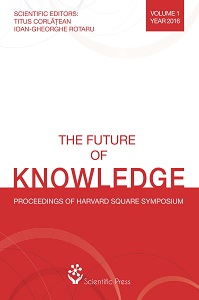
Keywords: The Metropolitan See of Wallachia; Iachint; Nicolae Alexandru Basarab; Curtea de Argeş; recognition of Metropolitan See
The seat of the first Metropolitan See of Wallachia—which was canonically recognized by the Ecumenical Patriarchate of Constantinople—was established at Curtea de Argeș, along side with the Princely seat. This ecclesiastical structure—together with the existing princely seats which were attested long before the foundation of Wallachia—demonstrate that “the [Romanian]nation was born spontaneously and naturally as a Christian nation, because conventional Christianity together with the Latin culture contributed to its formation. We are Romanians because we areChristians and we are Christians because we are Romanians
More...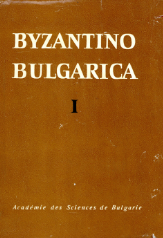
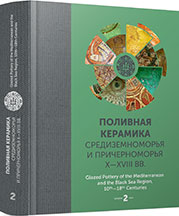

Keywords: Romania; Dobrudja; Byzantine period; glazed ceramics; archaeometric investigations
This paper completes the information regarding the glazed pottery from 10th—11th century from the western region of the Black Sea, from Dobrudja. Majority of the new discoveries belongs to the group with monochrome glaze (green-olive), rarely polychrome (green-olive with yellow; greenish-yellow on a chestnut background). The material, mostly fragmentary, comes from jugs, pots and cups of different sizes. Among other finds, a glazed clay egg was discovered at Hârşova. Glazed pottery from the two analyzed settlements represents local productions and imports, several fragments were studied by using archaeometric analysis, some data regarding the glaze are presented at the end of the article.
More...
Keywords: Taurica; Alushta; Golden Horde; 14th century; Genoese; pottery
Ruins of the medieval settlement, one of the names of which in the 14th centuries was known as Lusta, are located on the top of a coastal hill between two rivers in the central part of modern Alushta (Southern coast of Crimea). The excavations were carried out there in 1981 (V. Sidorenko), 1984—1994 (V. Myts) and 1998, 1999, 2001, 2009 (I. Teslenko). On the basis of the archaeological data and evidence of written sources V. Myts has determined the Golden Horde period in the history of the town dating it from the end of the 13th to the 80s of the 14th century. During this period a new urban design of the settlement started to form, and several lines of streets with many houses were constructed. But in less than a century the settlement was burned. Remains of some of the household with traces of the fire have been investigated during the excavations. The materials from one of them are particularly interesting. They include the collection of well-preserved ceramic wares of various functions and origin, among which there are about three dozen of glazed table wares from local and overseas workshops, dating back mainly to the second quarter — last third of the 14th century. Analysis of the ceramic assemblage allows to conclude that connections of “Golden Horde” Lusta with the urban centers of the Golden Horde were rather weak, but at the same time the interest of Genoese merchants to this area was rather significant even before the official transition of the coastal land under the jurisdiction of the municipality of Genoa.
More...
Keywords: Azak; Golden Horde time; glazed bowls; ornament; images of feline predators; production centers
The author examines finds of glazed bowls with images of lion and leopards from the digs on the Golden Horde City of Azak. Similar bowls, usually small and ornamented in reserved and sgraffito technique, are widely spread mainly in the Balkans and the Crimea and are dated by the second half of the fourteenth century. The article contains detailed description of the finds from Azak and determines its production centers: Byzantium in four cases (Constantinople or its environs) and South-Eastern Crimea (possibly Caffa, which produced imitations of Byzantine items) for the other two.
More...
Keywords: Golden Horde; Astrakhan Oblast; Krasny Yar settelment; glazed pottery; Qashan ceramics; pottery workshop
The article discusses findings of the research conducted on Krasny Yar hillfort (Astrakhan Oblast) and defines the ceramic assemblage uncovered during the archaeological excavations. If offers an analysis and typology of Qashan glazed ware and provides data on debris of a pottery workshop, which used to manufacture glazed ceramics. It is the first such workshop uncovered in a non-capital Golden Horde city in the Lower Volga region.
More...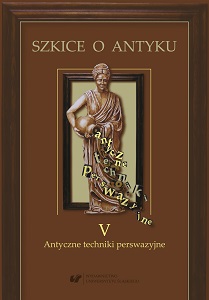
Keywords: University of Silesia in Katowice; Department of Classical Philology; classical studies; research projects;
The Department of Classical Philology at the University of Silesia in Katowice was established in 1991; but the beginning of its teaching and academic activity is dated to 1992. Professor Stefan Zabłocki was a founder and the first director of the department. His efforts met with the friendly support of the Dean of the Philology Department; Professor Jan Malicki and of the Vice Chancellor of the University of Silesia; Prof. Maksymilian Pazdan. The Silesian Circle of the Polish Philological Association was created in 1927 as an initiative of Inspector Wincenty Ogrodziński and Prof. Ryszard Gansiniec. The activeness of Upper Silesian classics was the result of the high level of the local educational system and later of the creation of new higher schools; especially the Silesian Medical Academy and the University of Silesia. Classical studies were established in favourable conditions also thanks to changes which took place 1990s. The development of classical philology in Katowice would not have been possible without a didactic support from Hellenists and Latinists from Krakow; Łódź; Opole; Poznań; Toruń; Warsaw and Wroclaw. The department has had its own didactic and academic staff for several years. Therefore it is possible to pursue studies of classical philology (bachelor’s; master’s degree) and Mediterranean studies (leading to a bachelor’s degree). It is also possible to do research in literary and linguistic studies as well as in ancient culture and its reception (especially in Byzantine literature and Neo-Latin texts).
More...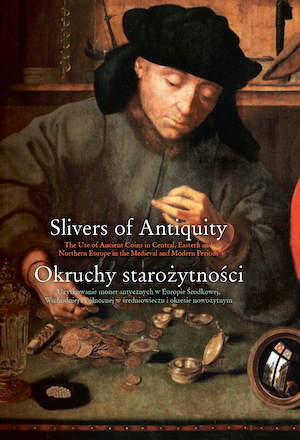
Keywords: Ancient coins; Middle Ages; early modern era; eastern Germany; re-use of Roman and Byzantine coins
The paper deals with the question of the re-use of ancient (mainly Roman) coins during the Middle Ages and the early modern era in the former Slavic-settled parts of Eastern (and Northern) Germany. From the 10th/11th century, there is evidence for the re-use of Roman coins, best recognizable with single Roman coins in early medieval silver hoards and with Roman coins probably used as foundation offerings under buildings in the early Modern Era. In view of the few and often not certainly contextualised finds, however, it seems that the re-use of ancient coins was not a distinct phenomenon and was based mainly on incidental finds that were appreciated because of their metal value.
More...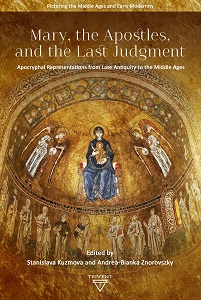
Keywords: Virgin Mary; Mariology; early Christian; Byzantine; liturgy; iconography; art; gender; Protevangelium; Dormition
Recent studies have demonstrated that from Late Antiquity up through the early modern era, some artists portrayed Jesus’s mother Mary as a priest, including depicting her with insignia such as the Eucharistic handkerchief and the episcopal pallium. In fact, surviving art indicates that Mary was portrayed with liturgical insignia as early, or earlier, than any male leader. Contextualizing why artists portrayed Mary in this fashion, even earlier some gospel writers had paralleled Mary and Abraham as the cultic founders of their religion, and other authors represented Mary as the high priest or bishop of bishops. Censorship, both ancient and modern, appears to explain why Mary is rarely remembered this way today.
More...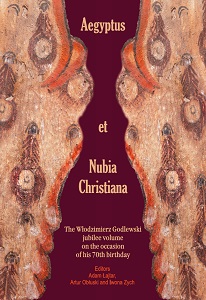
Keywords: Nubia; church/sacral architecture; cathedral; Qasr el-Wizz; Faras; Dongola
“To date the research on the church architecture in Nubia has consistently failed to differentiate, territorially and historically, between two different Nubian kingdoms” (Godlewski 2006b) and one could add the third, Alodian, kingdom to this. The author’s involvement in a project to publish the Oriental Institute of the University of Chicago excavations at the Qasr el-Wizz monastery has generated this study of the early architectural history of the katholikon at Qasr el-Wizz and its development, analyzed in the context of studies on Nubian Christianity. Due to a rampant misuse of terminology referring to the functional parts of churches in Nubian studies, a review of this vocabulary was deemed essential as a background for a presentation of the late George T. Scanlon’s views on the development of this particular church, followed by the present author’s addenda et corrigenda, and a discussion and conclusions for the study of Christian Nubian sacral architecture.
More...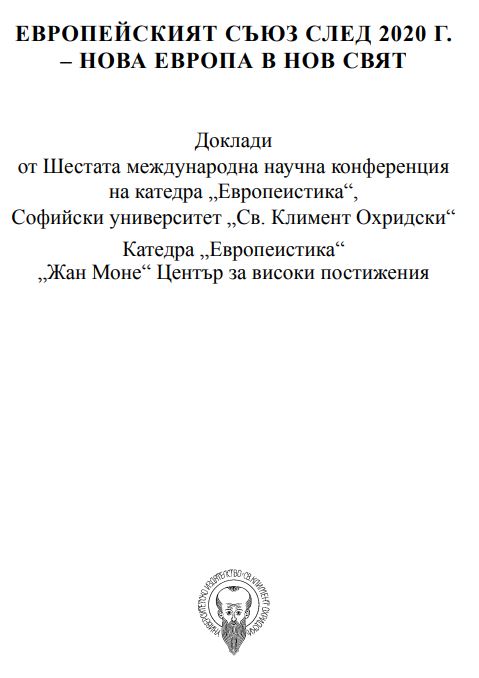
Keywords: North Macedonia; Secularism; European Integration
The separation of the Socialist Republic of Macedonia from the Socialist Federative Republic of Yugoslavia happened in the light of the major tectonic movements in the former European socialist/communist countries in the last decades of the 20th century, as a result of series internal political, economic and social conditions and circumstances. With regard to the SFRY, these processes brought to the surface some conservative myths of constituent nations, which in the process of transition of the constitutional and political systems have built, on the foundation of these premises, new top priorities – national states with a democratic order, free and competitive entrepreneurship, market economy and commerce, political and social pluralism in accordance with the standards of the developed west-European democracies. Having in mind the opposing constitutional concepts, the one that was falling apart vis-à-vis the one that was to be created, and under the pressure from major global trends, the process of a forceful collapse of the former Yugoslavia was initiated, which resulted in the formation of today's Macedonia as a sovereign, independent and democratic country which stood for full observing of the common democratic principles of the international law contained in the UN acts, as well as in the documents of the other international, European and regional organizations. By installing the new constitutional, legal and political order, Macedonia was to respond to the challenges of the new age.
More...